When the American Frontier was alive, and still a drawing force compelling folks to head West for fortune and glory, the lives of famous gunfighters and personalities that inhabited the fringe of civilization were often greatly exaggerated. Men like the dude we know today as Jeremiah Johnson did their thing, stories of their deeds spread by word of mouth, and layer after layer of exaggeration and interpretation were added along the way.
Eventually, some writer at a newspaper or magazine or someone who made their living cranking out dime novels about adventures in the Wild West to give Easterners big dreams would catch on, and then they would get their turn at making a real person’s already convoluted story their own.
Entire bloviated biographies would become attached to a person’s name, occasionally while they were still alive. Sometimes, they played right into it and made a decent bit of coin doing so.
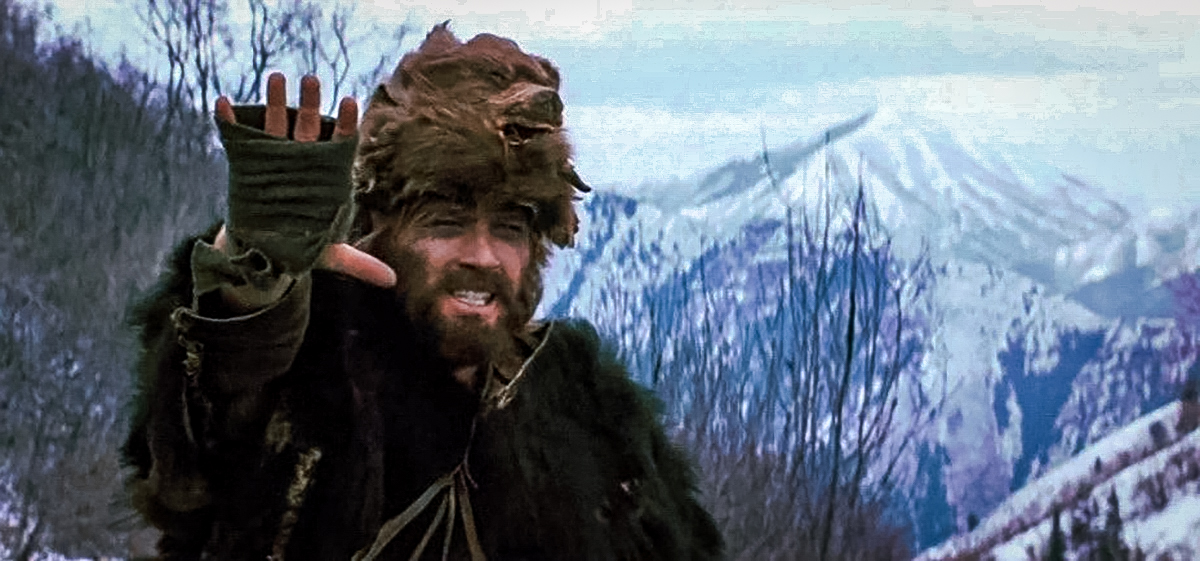
It wasn’t just famous gunslingers who got this treatment — it happened with mountain men, like Jim Bridger, Kit Carson, John Colter, Hugh Glass, and Jedediah Smith, and yes, John “Liver-Eating” Johnson — all to varying degrees.
Plus, the mountain man culture, if you will, lent itself to tall tales. They were fond of spinning exaggerated, boastful stories about one’s exploits around the campfire — it was sort of like a modern-day Instagram. They entertained each other with big fish stories, tall tales of the frontier.
Skip ahead a few generations to the 1950s. Interest in the Wild West hit an all-time high, and those exaggerated stories in those dime novels — the rights to which were cheap and easy to obtain — were translated to the small and big screens — muddling things even more.
The accepted “true story” of Johnson’s life developed in this climate as published in the 1958 biography Crow Killer: The Saga of Liver-Eating Johnson by Raymond W. Thorp and Robert Bunker.
The Real Jeremiah Johnson was Either a Loveable Joker or a Vicious Cannibal
The two authors never met. Bunker never even looked at Thorp’s notes before he crafted the bits and pieces he massaged into a cohesive book. Meanwhile, Thorp was widely known for embellishing stories, including his romanticized and largely fictional account of the life of Jim Bowie.
Today, the book comes with an introduction written in 2015 by Nathan E. Bender that basically says, “Most of this book is unsubstantiated bullshit.” But that doesn’t make it any less fascinating of a read.
The mountain man known as John Johnson did, indeed, exist. His given last name was actually Johnston, though he eventually went by Johnson. The stories that have been floating around about Johnson since the mid-1800s have painted him in various lights.
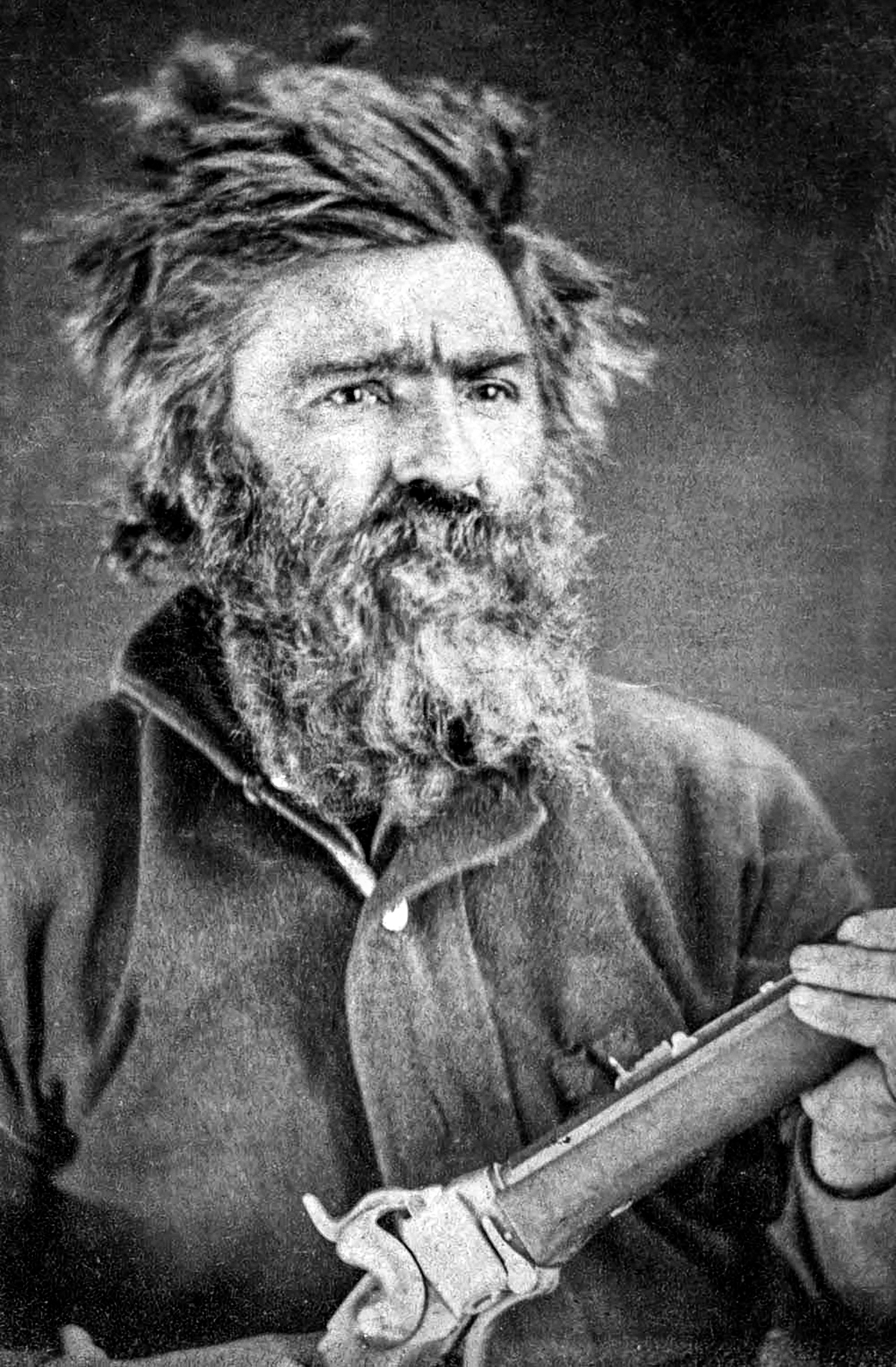
Some describe him as a jolly, practical-joke-playing man of physically large stature who loved a tall tale and making a living off the land as a trapper and hunter.
Others portray him as a vicious cannibal who could twist a man’s head off with his bare hands and who waged a gruesome one-man vendetta against the Crow tribe of Native Americans, killing them outright where he found them and leaving poisoned food and blankets behind for the ones he didn’t.
Of course, those stories got all mixed together and made into the bigger-than-life yarns about Johnson we have today. And if you dig a little, it just gets muddier and muddier.
Did He Really Eat Long Pork?
Nobody knows if Johnson ever ate human flesh of any kind. The whole idea that he actually feasted on the livers of the many Crow natives he allegedly killed as an extra “F you” to their beliefs while avenging the murder of his wife and child most likely came from a skit Johnson performed while he was part of a traveling Wild West show in the 1880s, according to Bender.
The name “Crow Killer” was invented for a good book title and was almost certainly never applied to Johnson while he was alive.
“In fact, Johnson had quite a bit to do with manipulating his public image, and he may have even consciously modeled his own story after that of Tom Quick and Lewis Wetzel. Quick had declared a one-man war on the Delaware Nation in northwestern New Jersey in the 1700s, where Johnson was born and raised,” Bender writes.
“In 1884 Johnson starred in an early Wild West show with Calamity Jane and Curley, one of Custer’s Crow Indian scouts,” Bender says.
“In this traveling show Johnson reenacted and greatly dramatized his one-man Indian fights of the 1860s and 1870s and the eating of a Sioux warrior’s liver, though using Crow Indians as paid actors.
“This is apparently where Raymond Thorp got the idea of Liver-Eating Johnson fighting Crow Indians, no doubt during his work interviewing and writing the biography of Wild West showman Doc Carver.”
The Big Screen Johnson With the Sweet Beard
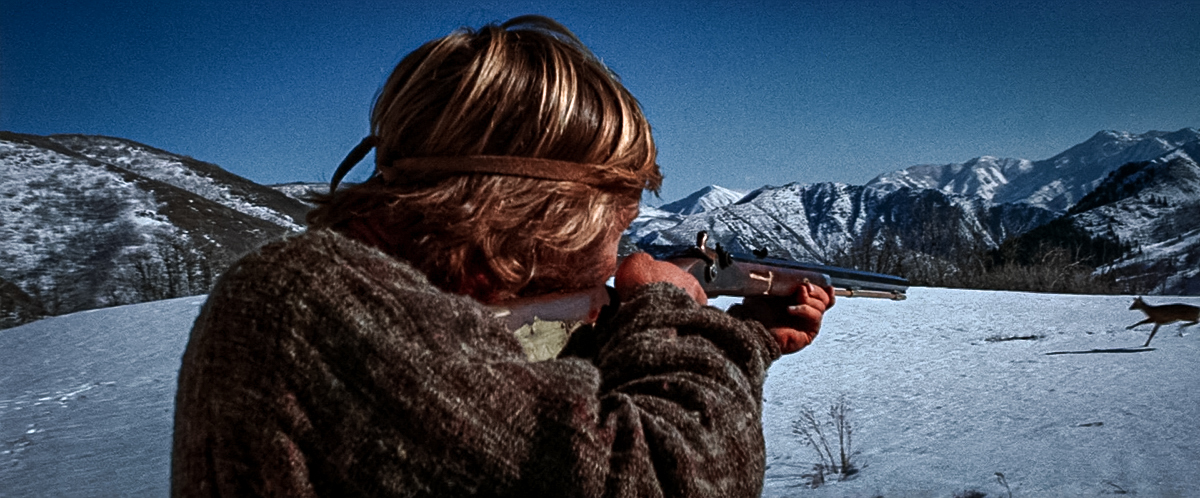
The version of John Johnson most people are familiar with is the protagonist of the 1972 movie Jeremiah Johnson directed by Sydney Pollack and starring Robert Redford in the titular role smiling through his impressive beard with the Rocky Mountains providing an unforgettable backdrop.
You’ll often hear that the film is based on the Crow Killer book, but the entire structure of the movie — and the actual character that Redford plays — is largely pulled from another book: Mountain Man: A Novel of Male and Female in the Early American West by Vardis Fisher, published in 1965, which itself is a fictionalized retelling of the Liver-Eating Johnson mythos.
Fisher greatly softens the character, called Sam Minard in the novel, making him a mild-mannered Mexican War veteran who sets out to find solitude in the mountains and learn to live on his own. This is very much how Jeremiah Johnson is portrayed in the film: a prematurely world-weary young veteran who doesn’t want much to do with people anymore. In reality, Johnson was probably more like a younger Bear Claw (Will Geer).
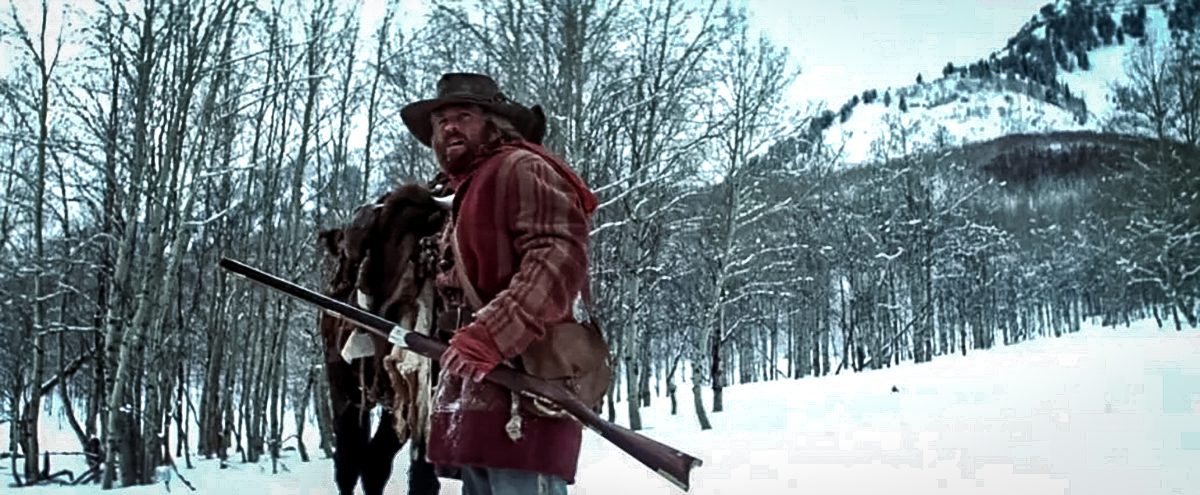
Some of the plot details from the novel are different in the movie, but the structure is the same. In both, Johnson comes upon a crazed woman who survived an attack by natives that left her husband and sons dead.
In the novel, Johnson puts her under his protection, something that the real Johnson is likely to have done, as it’s cited in all and the earliest accounts.
In the movie, Johnson instead adopts the crazy woman’s only surviving son, left mute from the tragedy he endured.
Soon after, due to a language barrier, the movie Johnson ends up accidentally trading some ponies and scalps he and his partner, Del Gue, took from a marauding band of Blackfoot warriors to the chief of the Flathead tribe, in exchange for the chief’s daughter, Swan (Delle Bolton), in marriage.
Johnson, Swan, and Caleb then build a cabin and a happy life together.
In Fisher’s novel, Minard simply takes a native woman from the Flathead tribe as a wife and they have a child together.
When he goes to hunt one winter, leaving his wife and child at home so they don’t have to endure sleeping outdoors in the harsh weather, Minard returns to find his family massacred by members of the Crow tribe. He then sets out to kill those responsible.
The incident is portrayed about the same way in Crow Killer, the only difference being that his child hadn’t been born yet and Johnson’s wife was pregnant at the time of her murder.
Another layer is added to this pivotal event in Johnson’s life for the movie in an attempt to make it more understandable and provide some motivation for the attack on his family.
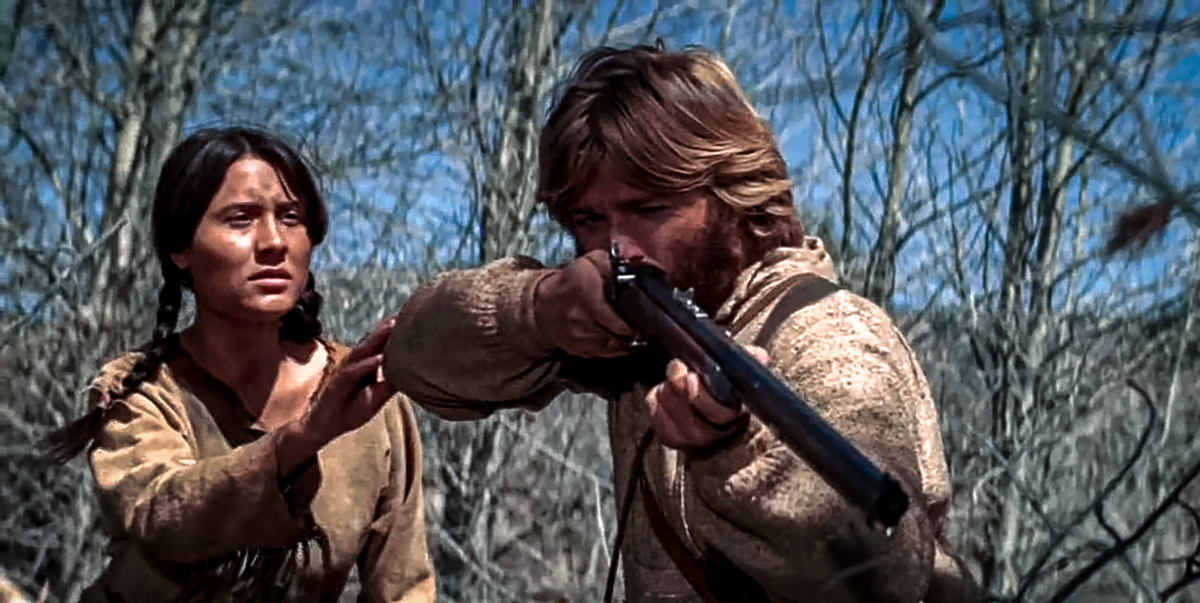
One day, a column of U.S. Cavalry soldiers arrive at Johnson’s cabin and ask him to serve as their guide to help them find and assist a wagon train of settlers stranded in the mountains before they freeze to death.
He reluctantly agrees, even though he should be hunting buffalo at the time. When the party comes to a Crow burial ground blocking their way through a mountain pass, Johnson tells the troop leader that they have to take another route that would add about 20 miles to their trip.
The soldiers protest and pressure him to lead them through despite his reservations, which he does.
When returning on the same route, Johnson notices his wife’s distinctive blue trinkets adorning the graves in the burial ground. He rushes back to his cabin, where he finds his family murdered.
Jeremiah Johnson’s Vengeance Ride
The next part is pretty much the same in the novel and the movie. He sits in a stupor for a while, as one does, before wrapping his wife and son in blankets and setting the family’s cabin afire — again, as one does.
He then tracks the band of Crow who killed his family, finds them with all the goods they stole from his home, and fuckin’ kills them all in a solo, berserker attack — all but one, whom he allows to escape.
This revenge quest is the heart of the Johnson legend. Much like Wyatt Earp set out on a vengeance quest to kill every member of the gang who killed his brother, the real Liver-Eating Johnson is said to have done something similar, killing hundreds of Crow in the following years as retribution for the death of his family.
The stories said he made it a habit to eat some of their livers along the way, which would have been considered a severe insult to the Crow.
Depending on the source, Johnson killed anywhere between 300 and 1,299 natives. That latter number is one Johnson boasted of personally, according to Bender.
In the movie, this is also softened a bit, making the Crow out to be the aggressors.
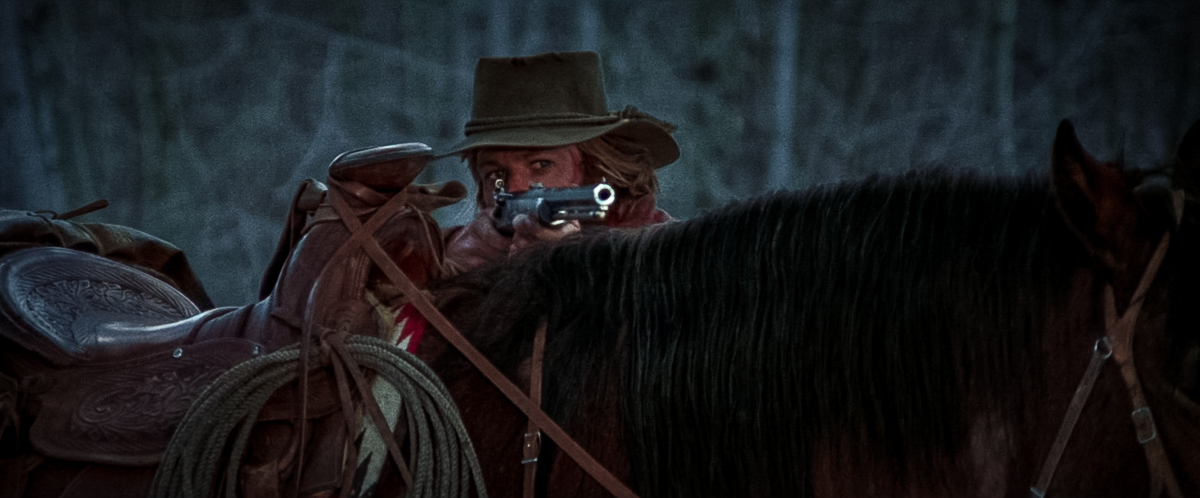
After the initial attack on the group that killed his family, Johnson is plagued by regular assaults from individual Crow warriors attempting to confront and defeat the man who became their tribe’s biggest adversary.
He faces one after the other and kills them all — with no eating of livers. (For some reason, Warner Bros. must not have wanted Redford chowing down on human patè.) This is shown through a montage of Johnson defending himself from various attacks that fade into one another.
When he meets up with his old partner, Del Gue, after a significant amount of time has passed, Johnson kills a lone attacker at their campsite like it’s a chore that’s simply part of his life now.
Did any of this really happen? The answer seems to be: Nobody knows, but probably not.
According to some, Johnson simply liked taking scalps from the Crow and other Native Americans, which he sold.
Others say he took no more scalps than any other mountain man of the day, but that he played up his reputation as an “Indian killer” when he got into the self-promotion business and Wild West shows at the end of his life. This is Bender’s conclusion.
The Tallest Jeremiah Johnson Tale of All
For context, there’s an absurd tale attributed to Johnson, which some say actually happened to Boone Helm and others say is merely an embellished version of the incredible real survival story of Hugh Glass, and was more recently chopped up and reworked in much the same way for the film The Revenant.
Johnson was supposedly ambushed and captured by Blackfoot warriors who planned to sell him to the Crow. As the tale goes, Johnson escaped his bonds and killed the man guarding him, quickly scalping the Blackfoot and cutting off one of his legs.
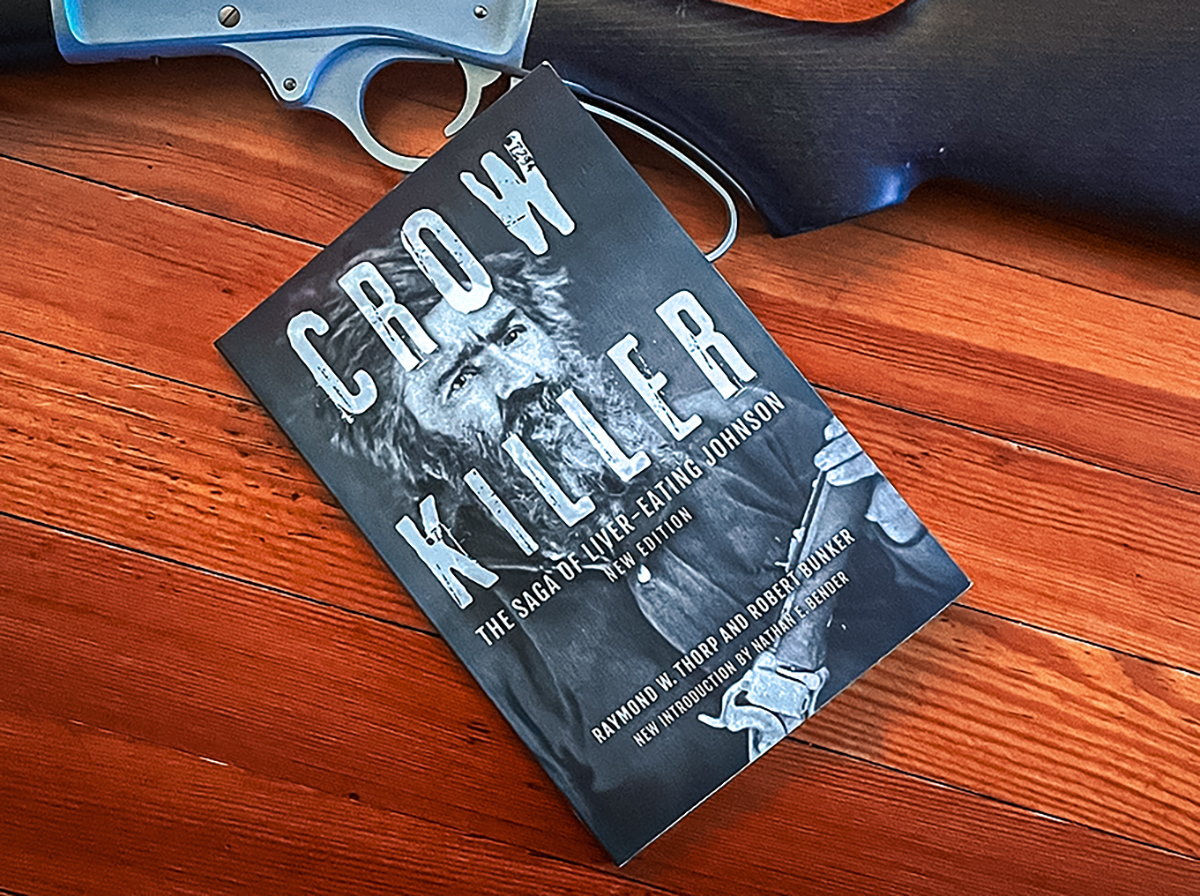
He then set out into the freezing wilderness, shirtless, and made a 200-mile journey on foot to Del Gue’s cabin — in some versions he returned to his own cabin. He survived the trip by eating the man’s severed leg along the way.
If anything, this story shows how grisly the public appetite was for these kinds of tales.
Even the headstone on Johnson’s grave is partly bullshit.
In 1974, they dug the man’s bones up from his eternal resting place in California and reinterred him in Cody, Wyoming.
His new tombstone, somewhat appropriately, reads: “John ‘Jeremiah Liver-Eating’ Johnston,” seemingly mashing the various versions of the man into one inscription, the name “Jeremiah” having been invented for the movie two years prior.
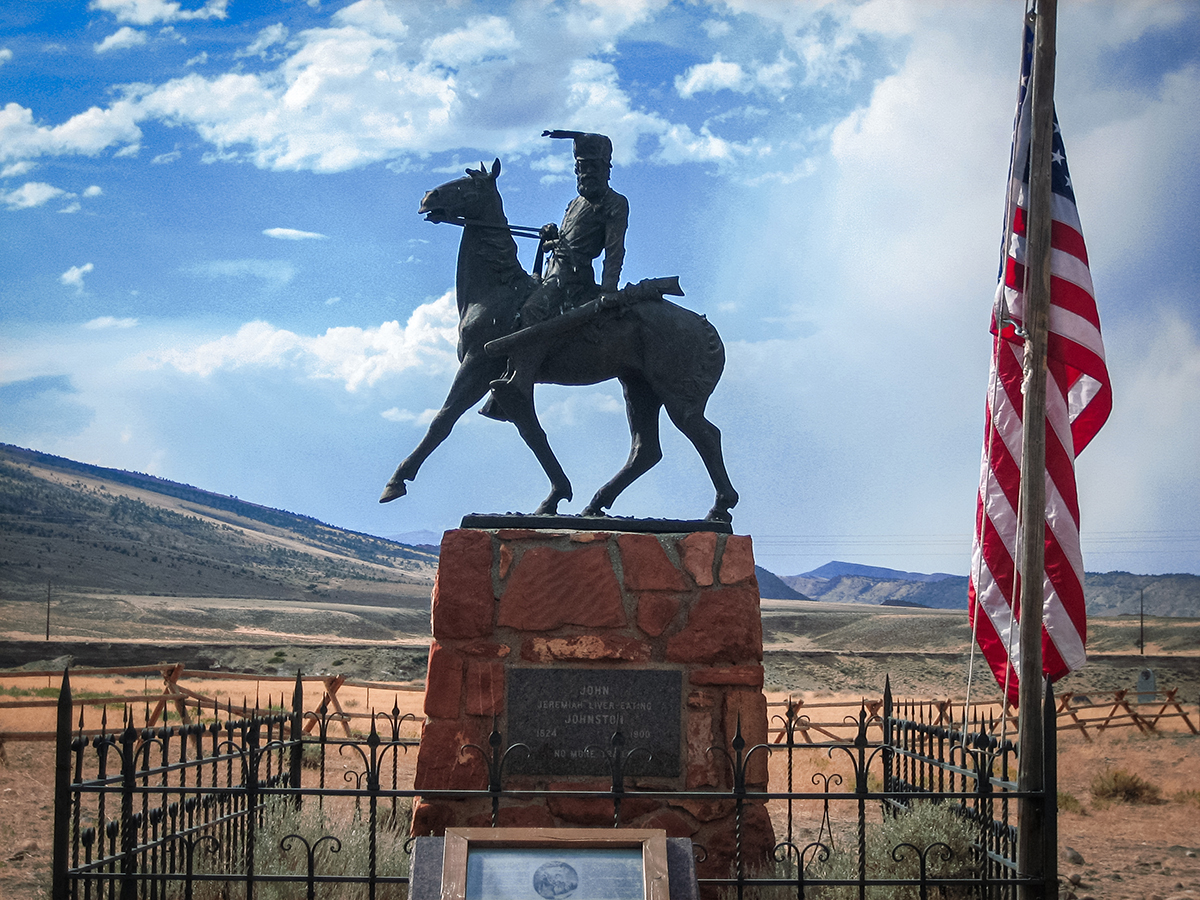
We Can All Agree on Jeremiah Johnson’s Guns
One thing people do seem to agree on is that during the bulk of his mountain man years, the real Johnson was known to carry a Colt Walker revolver with rosewood grips that matched the handle on his bowie knife, along with his famous Hawken rifle.
In the movie, Jeremiah has a bowie knife and carries both a .30- and a .50-caliber Hawken, but the only handgun he carries is a single-shot caplock pistol given to him by the crazy woman.
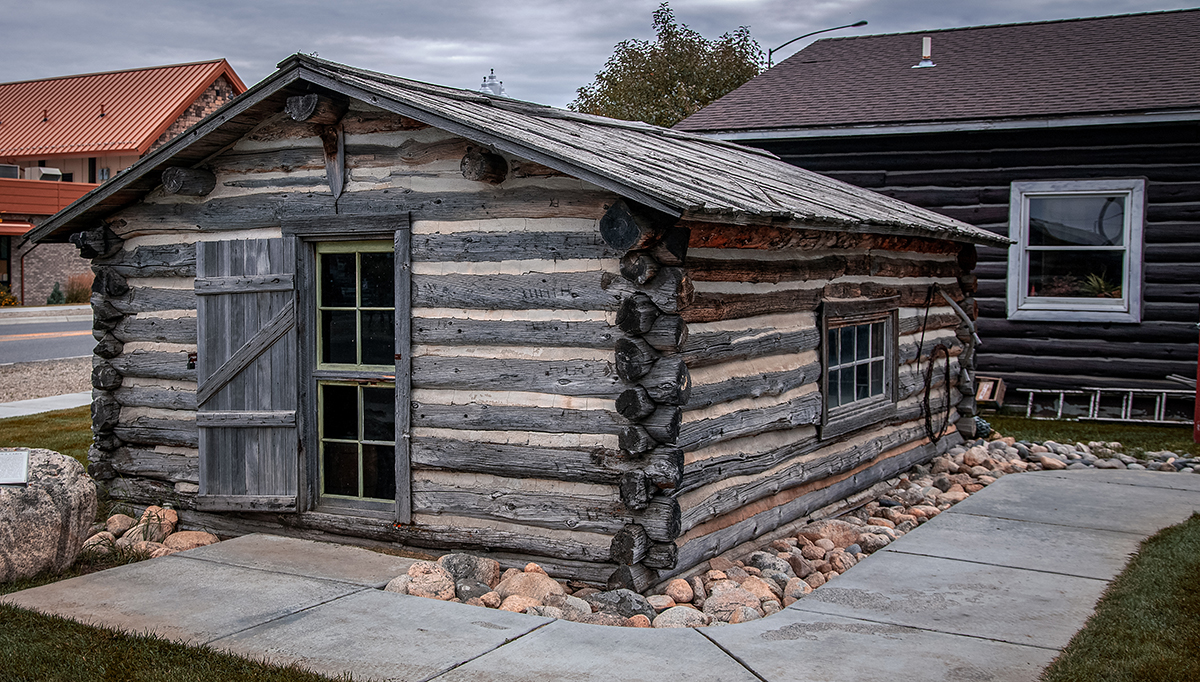
(He obtains the .50-caliber rifle when he liberates it from the frozen limbs of Hatchet Jack after discovering his body early in the film.)
After the Civil War, Johnson is said to have changed his weapons of choice to a stone tomahawk given to him as a tribal antique and a .45 Army Colt revolver. We think. In truth, the only possible way to get an accurate picture of Liver-Eating Johnson is to read both books, watch the movie, and decide for yourself.
READ NEXT – Climbing Movies: The Best and Worst of All Time



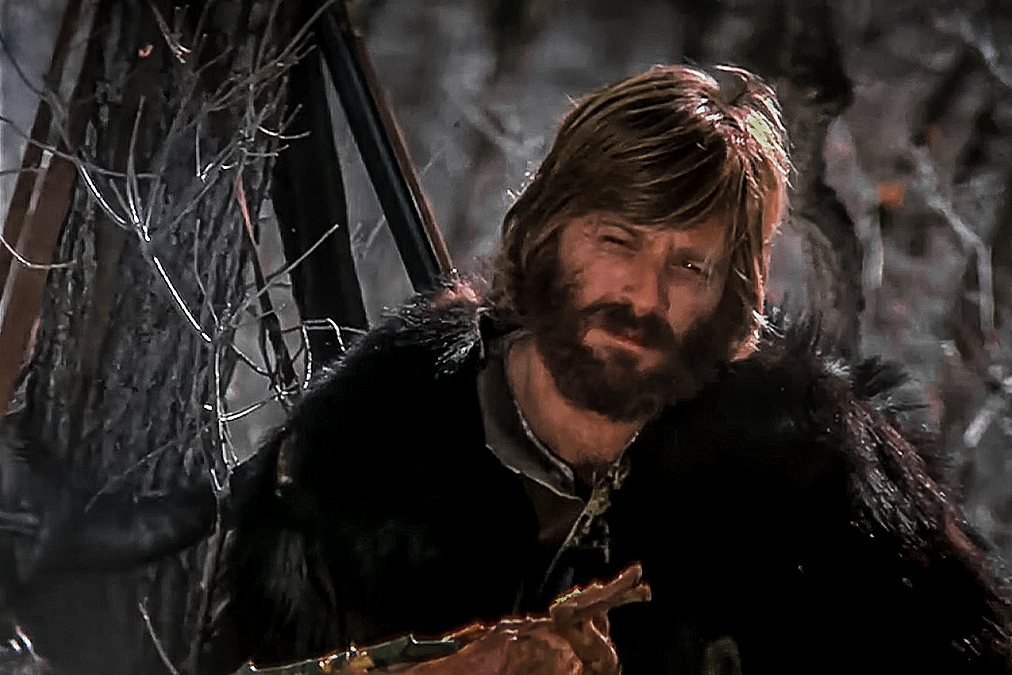
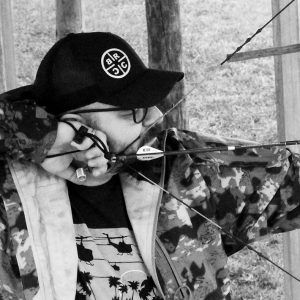
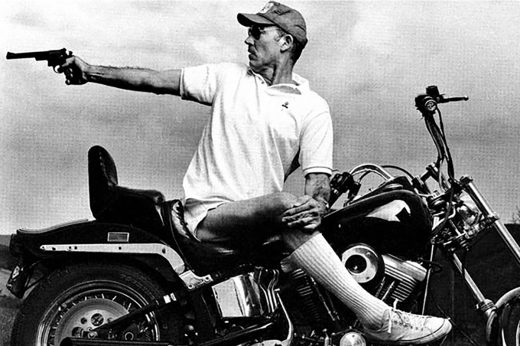
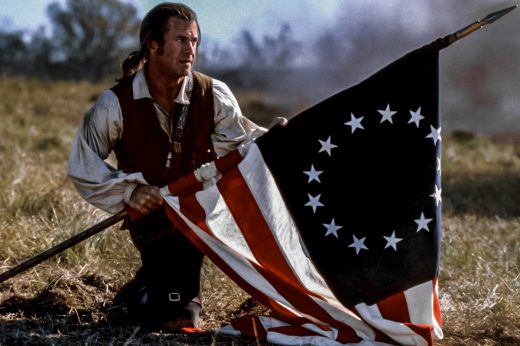
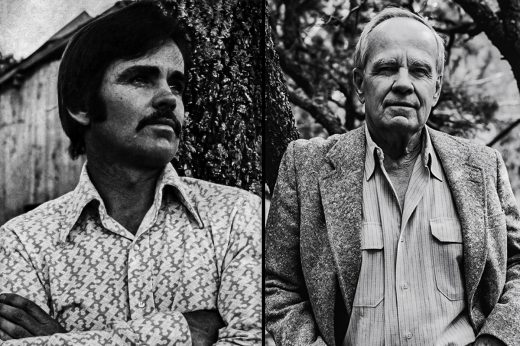


Gary Forbis says
Jeremiah Johnson is my all-time favorite movie. I particularly love the music which seems to be perfectly woven into the movie.
A true and timeless materpiece!
KenR says
I’m pleased you mention the above-average Music score for this fine movie Gary, not many seem to do this.
J.J. is a true one-of -kind classic film.
Dan says
Agree with you 100% If you get a chance, you should read the books. They are both very different and very entertaining. Absolutely love the movie. I watch it at least once a year.
Al Matsas says
I saw it with my dad when it came out in 72. I was 10. It remains one of my all time faves. Seen it dozens of times. Can’t resist…
Gary Kelley says
I have a dvd of the movie. My wife and I watch it regularly, maybe even two or three times a month, at times. She loves it just as much as I do.
Jean Peterson says
I lOVE this movie , and I love anything with Robert Redford. I only discovered this movie a few years ago and I have it permanently on my DVR.I have probably watched it 20 times. Just finished watching it again actually.
Kenny Rogers says
I have watched Jeremiah Johnson over 100 times. My all time favorite movie. I have been to several mountain man rendezvous and love the lifestyle of them american mountain man. I even taught myself the long forgotten skills of them early American mountain man like trapping hunting with black powder riffle preserving skins and making my own clothing with buckskins and bone or rolled buttons. I have also learned to make my own black powder and find natural lead deposits to mold ammunition with. I have learned first hand the extreme hardships of early mountain man in America and it was not an easy life. It was however a great experience and bone that I am glad that I had perused in my youth.
Kenny Rogers says
I have watched Jeremiah Johnson over 100 times. My all time favorite movie. I have been to several mountain man rendezvous and love the lifestyle of the american mountain man. I even taught myself the long forgotten skills of the early American mountain man like trapping hunting with black powder riffle preserving skins and making my own clothing with buckskins and bone or rolled buttons. I have also learned to make my own black powder and find natural lead deposits to mold ammunition with. I have learned first hand the extreme hardships of early mountain man in America and it was not an easy life. It was however a great experience and one that I am glad that I had perused in my youth.
Reply
Lodi Wolf says
This is my all time favorite movie. The best, can’t count how many times I’ve watched it. Beautifully done. Splendid to watch over and over.
KenR says
Agree
Lenny Deans says
Yes, Jeremiah Johnson is a brilliant movie acted superbly by R Redford. I know there is a certain amount of artistic licence with the truth but as a film it is great. The only other film that comes close in this genre is The revenant with Leonardo Di Caprio.
KenR says
This one of a kind movie seems to be a love or ‘not sure’ experience – my audience thought it excellent. It’s at times slightly off the wall but mostly on the money for depicting the vast challenges facing a war damaged city dweller – who’s attempting to survive away from ‘civilization’ in some of the world’s harshest country. It’s based on two works (by different writers) depicting a true-life legendary mountain dwelling character with a stark background – telling of a surprisingly gripping battle to survive – not just the challenging landscapes and animals, but some deadly Crow natives whose home this land was.
Its curious screenplay is the result of two vastly different writing styles (as were the original books) Semi-classicalist, Edward Anhalt (known for Becket ‘63) and young-gun of the time John Milius (collaborative writer on Apocalypse Now ’79) J.J. is visually stunning all the way with striking Alberta location cinematography by Duke Callaghan. The accompanying music score is a result of the unique collaboration of Tim McIntire (also vocals) and actor/composer John Rubinstein (son of Arthur) capturing the drama, warmth, and humanity.
This is superior movie making that almost creates its own genre. It’s different in a good way so, if you don’t warm to this curious story the first time round, go back for another visit – the Christian Indian Tribe is another curious aside. WB has treated this to an excellent quality DVD release.
John says
J.J. was filmed entirely in Utah, fyi.
KenR says
Found David Maccar’s overview of this all-time classic film an excellent read. What David has done is bring a realist view to this larger than life story. Whatever facts remain in the end, are certainly up to the audience but this is certainly a very special film of its find, on many levels.
Maryann Smith says
Love this movie … Very funny & entertaining ‼️… Great family movie… I’m 69 yrs old & something a movie that’s been handed down to each new generation as they come ☺️😎
Drew Earl says
We call it one of our “sleep-movies” . ..either enjoying its entirety, or falling asleep to it at night. Total fan, and have seen the film perhaps 500 plus times.
Ricky Pugalee says
Hugh Glass was one of the toughest men that the U.S. ever produced. But again, the movie really didn’t do justice for his incredible ordeal. I had such high hopes before seeing it, and was really disappointed when I did. It could’ve been so much better.
Jim Peterson says
I told my dad about the movie and how Jeremiah found a Hawken Rifle on a frozen man. My father collected muzzle loading rifles and had a few true Hawken rifles. In fact he sold his last Hawken Rifle to a friend who was writing a book on the Hawken Rifles, but only if he could have his picture with that rifle, in the book. His photo is in the book holding his Hawken Rifle. My dad went to the movie and told me the next day that the rifle in the movie was not a Hawken Rifle. I told my dad that only he and very few others would be able to tell that. I don’t know what he saw that told him it wasn’t a Hawken Rifle. I like this movie to this day.
James moratto says
A more accurate movie of Hugh Glass is “Man in the Wilderness” with Richard Harris.